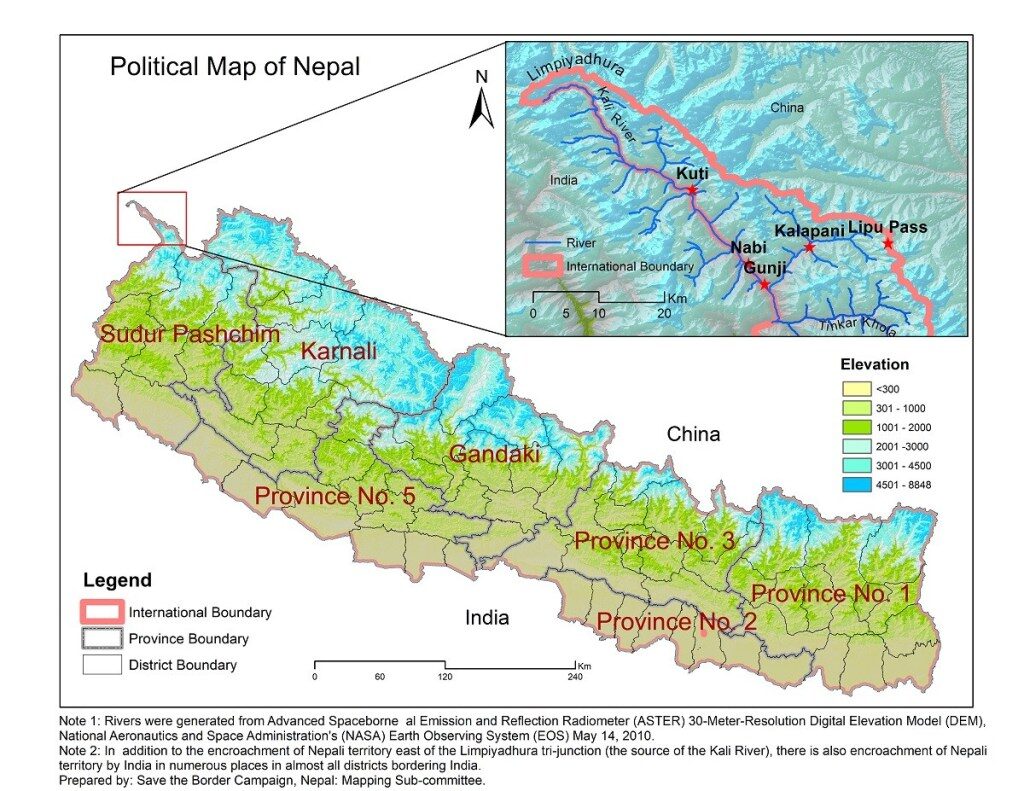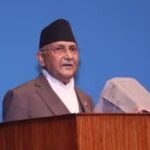Almost seven months after India published its controversial political map in November 2019 showing over 300 square kilometers territory of Nepal in India, the government has dared to publish new map including all territories including Lipulek, Kalapani and Limpiyadhura of western-north region of the country.
A meeting of the Council of Ministers held on Monday endorsed the updated map prepared by the Ministry of Land Management, Cooperatives and Poverty Alleviation.
According to Minister for Finance and Communication for Information and Technology Dr Yuba Raj Khatiwada, the newly updated map of the country will now come into use in all government administrative offices and academic textbooks.
After the meeting, Minister Dr Khatiwada said at a press conference that the updated map of the country incorporates Nepal’s northern, eastern, southern and western international borders shared by the country with India in the south, east and west and China in the north.
Minister Dr Khatiwada said that the map also included the country’s administrative and political arrangements.
The dispute of border that had surfaced after India made public its controversial map in November last year, and Nepal was seeking solution to the dispute through diplomatic channels, deepened further when India inaugurated a road built in Nepali territory prompting Nepal to issue the new map.
The map is based on the historical evidences, including the 1816 Sugauli Treaty, according to which the Mahakali River originates from Limpiyadhura and land east to the River belongs to Nepal.
Minister Khatiwada said that the map has now formally included Nepal’s territorial ranges that extend up to Limpiyadhura from Lipulek and Kalapani.
Now after publishing the updated map, the government’s next job is to evacuate Indians occupying in Kalapani area. The controversial remarks made by Indian Army Chief General MM Naravane that Nepalis were protesting against the border issue in the support of China is being condemned by Nepal’s political leaders saying that it is objectionable.
The step taken by the government to bring back the Nepali territory occupied by India since 1962 when India faced a humiliating defeat in India-China war is encouraging. All people and political parties have stood united with the government to safeguard the Nepali territory.
Nepal is an independent and sovereign country which was never colonized but India that was a colony of Britain until 1947 has always been undermined this historic fact, and has been showing elderly brother attitude towards Nepal. Not only the expression of Naravane but also the unilateral act to build road in Nepali territory and inaugurate it revealed the Indian attitude. But now India has received a fitting answer, and will have no option but to sit for dialogue to sort out the border dispute that has been in place for 58 years. If things are not settled down through diplomatic channel, Nepal is prepared to internationalize the issue.
Reproduced from People’s Review



